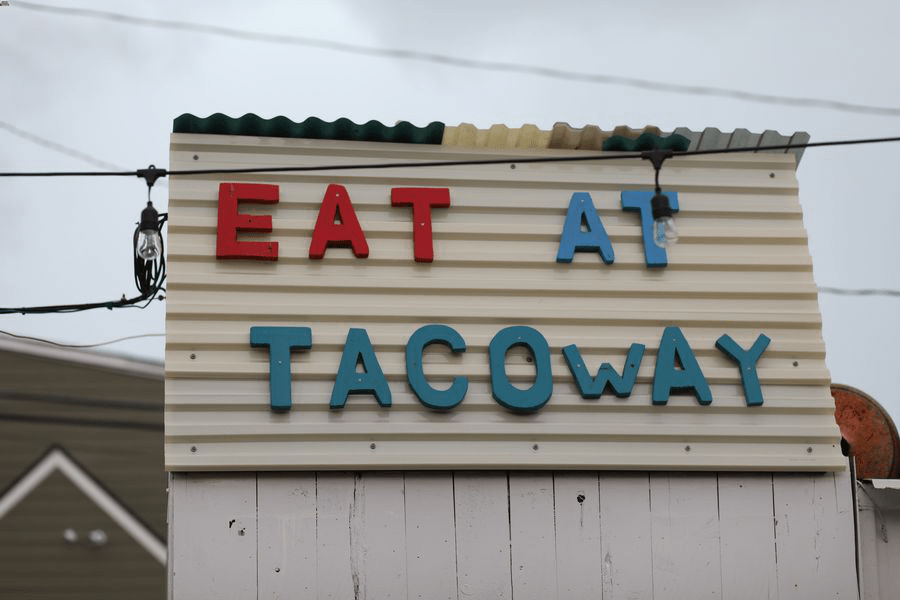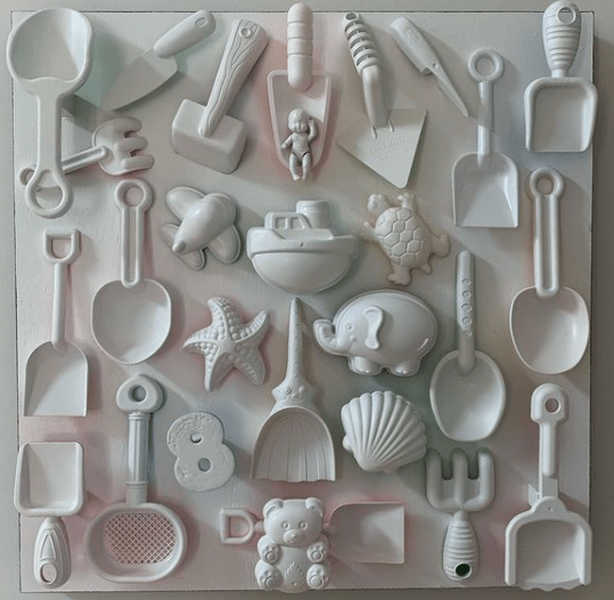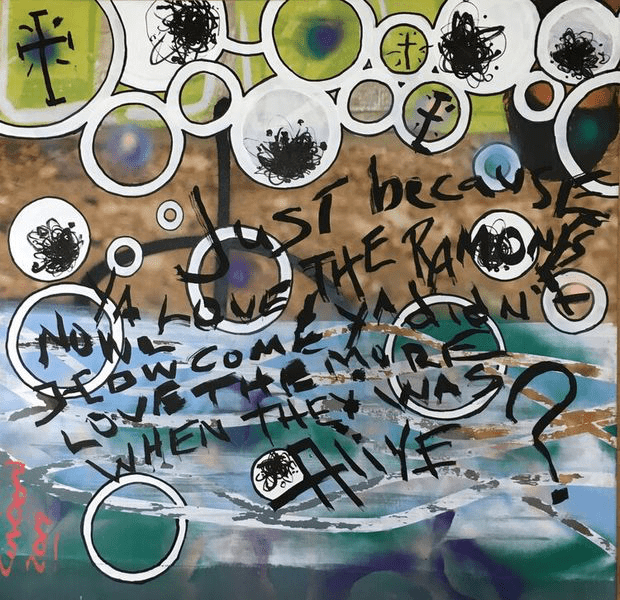Next up on our Guide to Rockaway: Pat Conlon, aka Pat the Rat. We sat down with the Surf Mayor of Rockaway a little while back to talk about the surf scene and his work as a local artist. Right after his dad poured us heavy vodka iced teas that he proudly brewed himself. Irish hospitality!
Mars Khan: What made you pick Rockaway? How’d you get here?
Pat Conlon: Well, my parents both worked for an airline so they worked out of JFK. This is the closest proximity to JFK, so I just lucked out. I ended up living at the beach because they worked at the airport. So that’s how it all started and how I ended up in Rockaway.
MK: When was that?
PC: 80s? Let’s just start with grammar school in the 80s, I don’t wanna go too far back. I lived like a block from the beach, so I just started surfing. It’s like any other beach community in Southern California or anywhere, just in New York. We rode bikes and surfed. And that’s what you did.
MK: So then what has the evolution been like? You’ve been here since the 80s, what’s changed the most?
PC: I remember paddling out here and knowing everybody in the water. Now, I barely know anybody because it’s gotten so crowded, basically, after Sandy happened. It decimated the peninsula and then everybody had to rebuild. They rebuilt the concessions and the boardwalk and that brought a whole new light onto Rockaway. So then people started moving here, like Patti Smith lives here now, and James Franco’s been down here. It’s just like all these crazy people come down here. It’s like the new hipster Hamptons.
“It’s like the new hipster Hamptons.”
MK: Yeah, for sure. I’m from a beach town in New Jersey and I really like coming here because I feel like it’s the same vibe.
PC: Just get on a bike and tool around.
MK: Cruisers all the way. So what are you up to now?
PC: Well I’m visiting my parents, that’s my day to day. It’s funny how the tides turn, you know, they raise you and then you start raising them after a while. Because they’re my kids. But I’m a painter and artist. I live in L.A. for the majority of the winter. I got smart and get out of here when it gets cold, and then I come back for summer.
Alex Corporan: Let the world know how you got the name Pat the Rat.
PC: Pat the Rat was because I was never out of the water, so I was a little water rat. They just started calling me that to make fun of me and it stuck. And then it’s like I didn’t have a last name. ‘The Rat’ was my last name.
AC: You go to every show, every concert, it’s like, “Pat the Rat, what’s up?” But your house is also known to house a lot of great musicians. Tell us about that. How did that become such a thing? Instead of people staying in a hotel, they’re like, “Nah, fuck it, we’re going to stay at Pat the Rat’s house in the backyard.”
“So the next thing I know, I’m housing three drunken hooligans and a Dalmatian.”
PC: I went to school in California and I befriended the guys in this little band called Sublime. They were like, “We’re going on tour,” and I was like, “Funny you should say that, my parents are from Rockaway if you go to New York and need a place to stay,” and they took me up on it. So the next thing I know, I’m housing three drunken hooligans and a Dalmatian. And then from there they had Skunk Records, and then I went on Warped Tour with them in ’95 and met a whole other litany of bands. My house basically became a flophouse, kind of a rotating house of insanity. I’d go see bands and then they’d come back here and stay and then they’re off to whatever. But it was nice because they loved it. And then of course the word got out, they were like, “Why are we going to stay in New Jersey, in like, Hoboken? We can live a block from the beach and jump in the water the next morning.” So that happened.
AC: Tell us a bit about Rockaway Taco. We recently visited them and were just hearing their stories. I remember you opened up a little kiosk over there, tell us about it.

PC: So I’m friendly with Andrew, and at the time it was David Sellick that bought that whole corner. They were providing a different food source for the community because it was just pizza and bagels. The fish tacos made sense for feeding the surf community. From that, it just blossomed, I mean, Rockaway Taco is worldwide. Now everyone knows Tacoway Beach, which it is now. But at the time there was a little lean-to next to the Rockaway Taco. It was just an open space and we did a little pop-up surf shop there. We had boards and sold teas and everything else. It was a little community. There was Rockaway Taco, an icee stand, a farm stand on the corner, and then we had the surf shop. It was like a meeting grounds for everybody. It was fun, a nice little project.
AC: Tell us more about the local surf community. How did it blow up all of a sudden?
PC: Tell me about Supreme. What were the 90s like?

PC: What was the question?
AC: About the local surf community?
PC: Well, like I said, it was like everybody knew everybody in the water, so it just branched out from that. You get on land and become friends with everybody from everywhere. And literally when people come from New Jersey or even the city and they want to surf, they come to Rockaway. And then it just grows from that organically. The surf community is just like any community, it’s tight knit. You know everybody. Or like music and bands, you start to know other guys in bands, and it just evolved from that. But then the local guys here stood their ground as long as they could. Now it’s inundated. So many people are surfing now.
AC: Once you get off the train in Rockaway, it’s not like your regular Venice Beach where you’re just like, “Oh, this is a totally awesome beach town.” It’s pretty rough around here. Tell us about how much rougher Rockaway was.
PC: Well we used to go downtown, like the 30s, and we had to park our car underneath the boardwalk because you could at the time, it was an old wooden boardwalk. You could see it because you didn’t want anyone breaking into the car. That was back in the day when you had Benzi boxes. Remember Benzi boxes? We’d pull the radio out and put it under our seat. I lost so many radios to downtown Rockaway in those days.
AC: Let’s get into your artwork. First talk about your art and then tell us about the bubbles. How did that come about?
PC: I work for a multitude of brands like Vans and all these sorts of companies. We do window drops, like vinyl backdrops for windows, for displays. When a campaign was done, they’d tear it down and they’d just throw it away. I was like, “What are you doing with that?” And they’re just like, “It’s going in the garbage.” So I took that and made that my canvas. I don’t start from a blank canvas, I have something to build from. It’s like taking a piece from the puzzle, like I could find interesting things within these pieces of vinyl. I always wanted to do iconography, like all these different objects and things and references to life, but it was always frustrating because I never had a start. Well, I had a starting point with the vinyl, but I didn’t know what to do on top of it. So then the bubbles kind of literally, no pun intended, boiled it down and made it simple and made it a composition. I didn’t have to think about it. I just did it, almost like doodling on a napkin or something when you’re on the phone. So that’s kind of the extension of that. It made sense with the bubbles and the surf community and an aquatic water theme. And bubbles are everywhere, when you stop and think about it and realize that’s the inspiration for it, like there’s bubbles in drinks and everything, water…
MK: Metaphorically. Like where I’m from, they call it the bubble once you leave.
PC: And we’ve been living in a bubble the past year.
MK: Exactly. Yes.
PC: So that’s it. It’s the metaphor that we all live in bubbles, we all have our own. And bubbles have a reference, like it’s a childhood thing, it means happiness and effervescence, it’s uplifting. And they’re a brief moment in time. They don’t last forever, but they’re kind of beautiful. So this is like freezing that moment in an image.
MK: What is the local culture like when it comes to people that visit Rockaway from the city, or just outsiders generally?
PC: Well, there’s two dynamics that happen. Of course when the summer happens, everybody migrates from the city because it’s hot and they come to cool off. There’s that whole contingency. And then there’s the surf culture that’s more year round and they build a little infrastructure out here. Especially as of late, people don’t have to go to an office. They can telecommute. So people are gravitating to Rockaway and living here now. They can surf in the morning and then get on their computer and work. So it’s like, “Huh, this place isn’t so bad. And I have New York City in my backyard if I ever want it.” Kind of the best of both worlds. That’s what I grew up with, too. I have New York City in my backyard and the Atlantic Ocean in my front yard, it’s pretty awesome.
“I have New York City in my backyard and the Atlantic Ocean in my front yard, it’s pretty awesome.”
MK: Do you think that adds to the vibe of Rockaway?
PC: Yeah, of course it does.
MK: Just from being an outsider, it seems very welcoming and everyone’s hospitable.
PC: The thing that’s been great about rising from the ashes is all the concessions and new food things and Rockaway being highlighted, not like “Rockaway is rough and tumble, I don’t wanna go to the beach there, I’m gonna go to the Hamptons.” It’s right in your backyard, it’s a half an hour away. But you can come here and it’s like you’re saying, it’s welcoming and there’s things to do. You can get off the train and go to the beach and have everything you need: food, bars, things to do. It’s really a nice little staycation for everybody.
MK: This is actually my second time being here ever and I love it. One of my favorite parts is how relaxing it is, even just getting over the bridge and driving in.
PC: You feel the change. You see water and it immediately calms you down. I love that. It’s also the thing about the summer, people totally unravel in the summer and come out of their shell because you’re freezing all winter. Especially if you’re stuck in New York, it’s tough. So it’s nice to come out and just cut loose.

MK: Exactly. And I think that’s another really cool thing, how accessible it is to people that do live in the city. I live right off of the A line.
PC: Yeah. It’s accessible by boat, by car or by train. Or you can ride your bike.
MK: Right over the bridge.
PC: We’d get bike gangs. A couple of summers ago they’d come out and take their bikes; they’d stop, get a drink somewhere, keep rolling. And it’s like a 30 mile bike ride from wherever they come from. They all come.
AC: It’s about thirty, forty minutes from where I live.
PC: It’s not bad if you take the time and do it. Just some of the ways we enjoy the sunshine. If it’s sunny. But that’s weather on the East Coast, you never know what you’re going to get.
MK: How does being here in Rockaway affect your art, since you live in California half the time. Is there a balance?
PC: The beauty of it is, like I was saying earlier, I had New York City, the art mecca, in my backyard, and then I lived at the beach. Combining the two just by geography, it evolved. My love of surfing and work in the surf industry let me use materials that I worked with when I was in that world. That’s the evolution of it, the two worlds coming together. And growing up here in the 80s my heroes were people I could see every day. You’d see Andy Warhol, you’d see Keith Haring, you’d see some show. Those people were in the streets. Kenny Scharf was like a rockstar to me, you know what I mean? These are legit people that do cool things. That was my inspiration, how could it not affect me? And then being by the beach, that was just natural.
MK: I think it’s really cool how it all comes together based on your surroundings. I feel like people make the places, but the places also really make the people.
PC: I’ve always said that. You can have the coolest place, but it wouldn’t be cool. It’s about the people that are in it and the vibe that’s created.

MK: It doesn’t seem like a super polished process. What’s your process for creating all your art?
PC: Right. It’s very DIY. I make all my own frames because it’s just easier and cheaper and I can adjust things on the fly. I don’t go and buy pre-made frames from an art store and then find out that it’s not the size I want, or I want to adjust it and make it bigger or smaller. Because like I said, I take the vinyl and take the smaller piece out of the bigger puzzle so I could find out like, “OK, this piece is cool, but maybe I want just this.” It helps with adaptability and the ability to just make things. I also worked for Tom Sachs for a while and Tom was very rough and tumble. He makes duct tape paintings and everything has to be raw. That’s the art in it, like all the stickers, the price tags on the brackets and stuff, that was his whole kit. And then it’s funny because when I worked for him, he called me Slicky Conlon because I made stuff too tight, and I later started to learn his process of: the beauty is in the fuckups, the way the drips and the bubbles-
MK: And then at the same time it’s very intentional.
PC: Well yeah, there’s a little bit of that. I still hold onto that Slicky Conlon enemy so I’ll straighten it out a little bit. But all the bubbles are all different sizes. And now I’m actually trying to make t-shirts and printables and stuff, and I’m doing this thing with Vast. They’re going to start making board shorts for me and t-shirts and hats and stuff like that. I’m kind of an ambassador for them.
MK: Not sponsored.

PC: Yes, thanks guys! I give my stuff to the designers and they see the bubbles and they’re like, “Oh cool. We’ll just put a shape graph on top of it in Illustrator and rebuild all the bubbles.” I’m like, “No, that’s not how I want it. I want it like this with all the warbles and the fuckups and the things.” And they’re like, “Uh, OK.” I’m like, yeah, you’re just a tight ass and you want everything to be polished, like a design person. It’s a hurdle that I’m dealing with right now, it’s something I’m trying to get over. So to your point about prints, this is the thing. I’m trying to digitize all that stuff and have it where it’s clean and get it all shot. And then you do like multiples of certain things.
MK: What does it mean to you to be frank? To be real?
PC: Exactly that, I think that everybody should just be real and not be what they perceive or what they think they should be, just be real.
MK: Just be real.
PC: Just be real.
MK: That’s it?
PC: Pretty much.
MK: Cool.
Follow Pat on Instagram.


